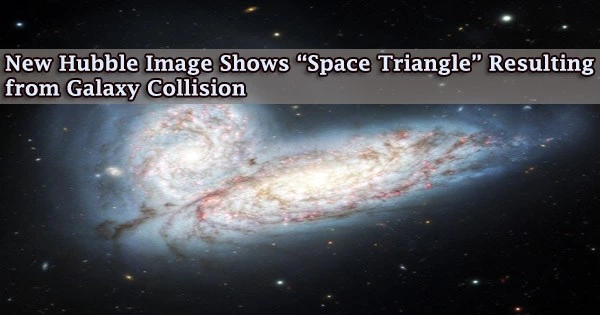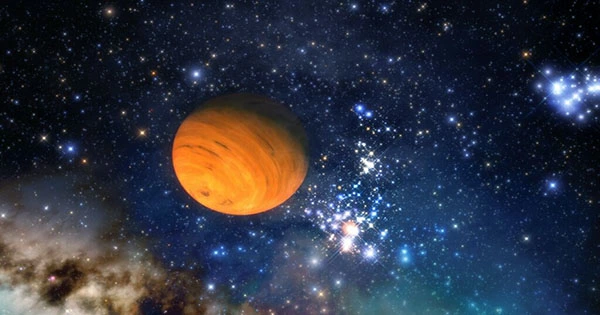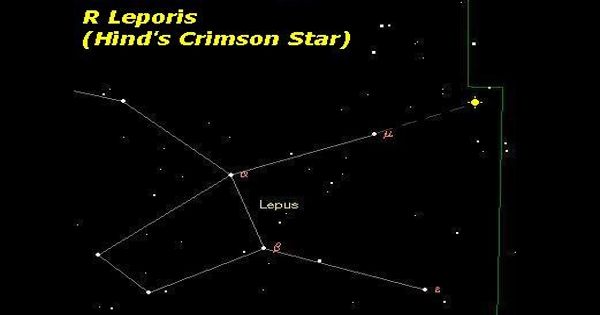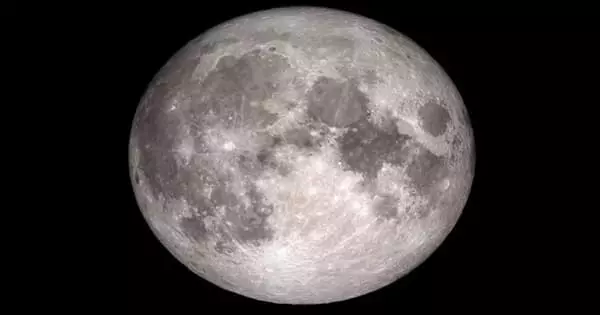A recent image from NASA’s Hubble Space Telescope shows how a stunning head-on collision between two galaxies caused the odd triangular-shaped star-birthing frenzy.
The two galaxies that are interacting are collectively known as Arp 143. The duo includes the star-forming spiral galaxy NGC 2445, which is sparkly and twisted, on the right, and its more subdued companion, NGC 2444, on the left.
The unusually formed star-formation inferno in NGC 2445, where thousands of stars are bursting into life on the right-hand side of the image, is thought to have been caused by the galaxies passing through each other, according to astronomers. Due to its abundance of gas, the substance that creates stars, this galaxy is awash in star formation.
It nevertheless remains trapped in the gravitational pull of its neighbor NGC 2444, which is visible on the left side of the photograph. NGC 2444 looks to be winning the cosmic tug-of-war between the two. The galaxy drew gas from NGC 2445 and formed the peculiar triangle of brand-new stars.
This is a nearby example of the kinds of interactions that happened long ago. It’s a fantastic sandbox to understand star formation and interacting galaxies.
Elena Sabbi
“Simulations show that head-on collisions between two galaxies is one way of making rings of new stars,” said astronomer Julianne Dalcanton of the Flatiron Institute’s Center for Computational Astrophysics in New York and the University of Washington in Seattle.
“Therefore, rings of star formation are not uncommon. However, what’s weird about this system is that it’s a triangle of star formation. Part of the reason for that shape is that these galaxies are still so close to each other and NGC 2444 is still holding on to the other galaxy gravitationally. NGC 2444 may also have an invisible hot halo of gas that could help to pull NGC 2445’s gas away from its nucleus. So they’re not completely free of each other yet, and their unusual interaction is distorting the ring into this triangle.”
In addition, NGC 2444 is responsible for pulling strands of gas resembling taffy from its partner, igniting the streamers of newborn, blue stars that seem to connect the two galaxies. These streamers are among the first in what seems to be an inward-moving surge of star creation that began on the fringes of NGC 2445’s.
The birth of the streamer stars is thought to have occurred between 50 and 100 million years ago, according to researchers. But as NGC 2445 is steadily pulling away from NGC 2444, these young stars are being left behind.
Nearer to the core of NGC 2445, stars that are no older than 1 million to 2 million years are developing. Some individual stars are seen thanks to Hubble’s acute clarity. They are the galaxy’s most massive and luminous objects.
Star clusters make up the majority of the vivid blue clusters. The pink blobs are massive, newly formed star clusters that are still cloaked in gas and dust. Even while NGC 2445 is where the most of the action is, that doesn’t guarantee the other member of the interacting pair is safe.
NGC 2444 has taken on an unusual shape because to the gravitational tug of war. Because the galaxy lost its gas long ago, well before this cosmic encounter, it has old stars but no fresh starbirth.
“This is a nearby example of the kinds of interactions that happened long ago. It’s a fantastic sandbox to understand star formation and interacting galaxies,” said Elena Sabbi of the Space Telescope Science Institute in Baltimore, Maryland.
The Hubble Space Telescope is a NASA and ESA (European Space Agency) joint international project. The telescope is run by NASA’s Goddard Space Flight Center in Greenbelt, Maryland.
The Space Telescope Science Institute (STScI) in Baltimore, Maryland, conducts Hubble science operations. STScI is operated for NASA by the Association of Universities for Research in Astronomy in Washington, D.C.
















